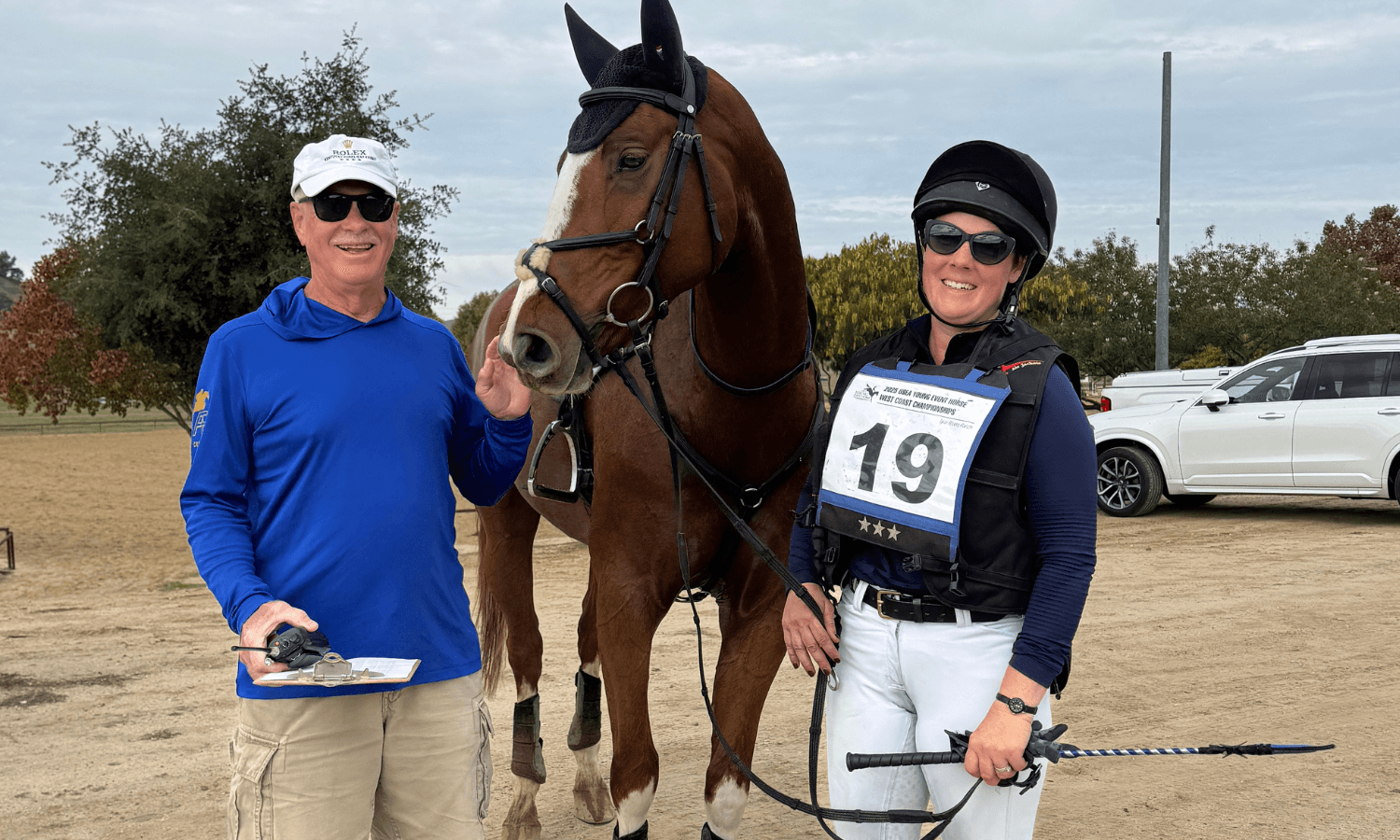Get a Good Gallop: Perfecting Your Fitness and Form
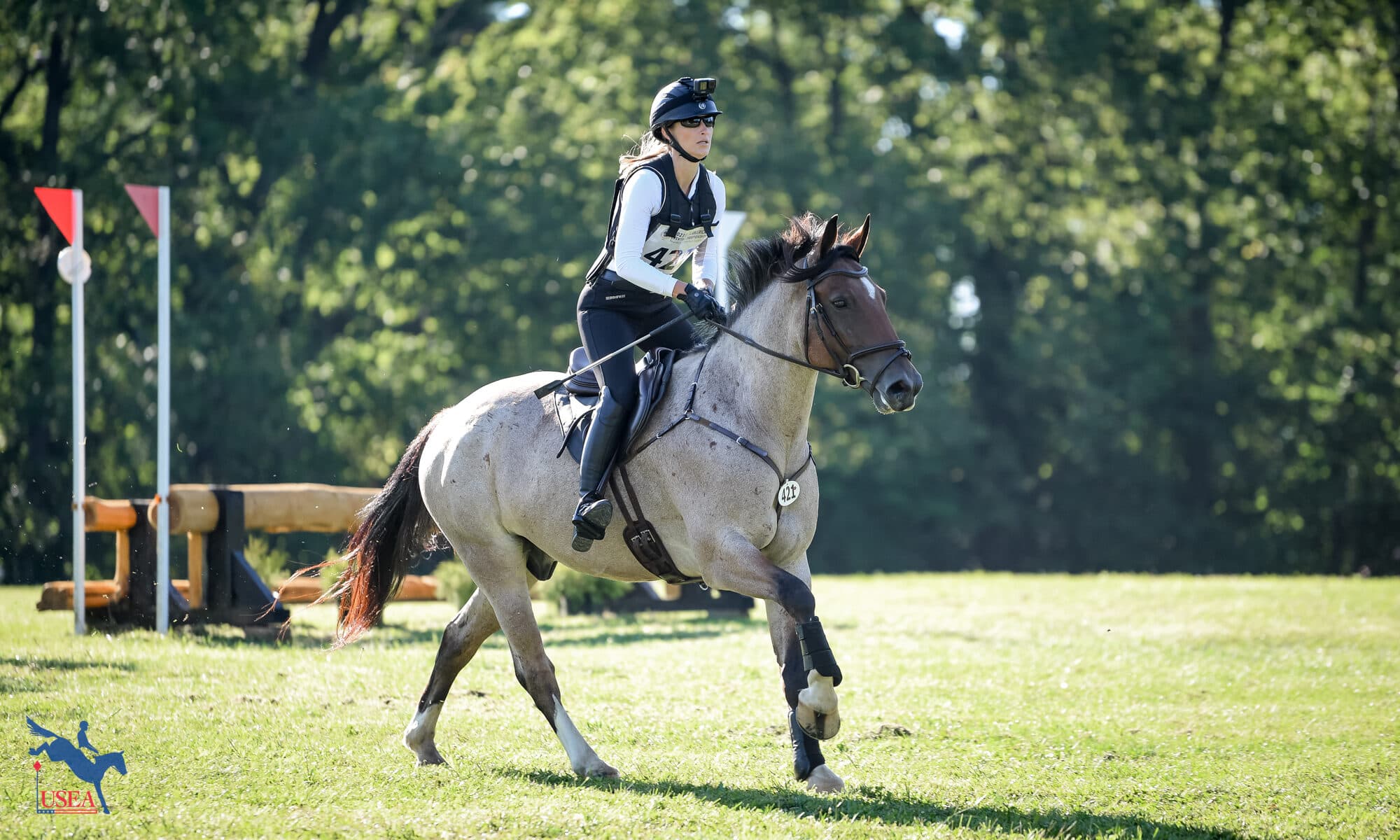
I do not find this to be an easy topic to write about because there is SO MUCH variability in what a correct galloping position should be. It takes time and years of practice to perfect. It is not easy, but is absolutely something that must be worked on and practiced, and muscle memory is key to success.
To have a good galloping position you must get your butt out of the saddle…literally. We should not see any posting in the galloping position, this is a basic tenant of correct form. Even gently tapping your horse back on a Beginner Novice course will cause unnecessary wear and tear and possibly even pain for your horse.
I am hesitant to write this because I do not want to discourage you from practicing, as practice is an essential part of the process to perfecting your galloping position. You must be strong enough and balanced enough that you're keeping your glutes out of the saddle when you are in a galloping or cantering cross-country. You need to be careful to stay muscularly engaged and not locking out your joints to maintain this upright posture.
Locking out at the joints, especially the knees, will cause a lot of concussion especially in your knees, hips, and low back and may cause back pain in the future if you are not there already. The best thing to do is make sure that you are working on building the muscles in your legs to create the strength to hold yourself out of the tack for the full time of your cross-country course.
One great way to improve your galloping position is by imitating the riders you see on course that seem to make it look effortless. Trust me, a lot of effort and years have gone into perfecting the position in the pro athlete, however, it is muscle memory that is carrying them across the course. They continue to do it week after week. Look for a rider that has a similar build to yourself. A female rider who is 5’2” and weighs 110 pounds soaking wet is going have a very different galloping position then a 6’5” man. Emulate what you see in a rider that has a similar body type to you.
The biggest thing I can tell you is to start an open dialogue with your trainer as often times they can be hesitant to talk with you about your galloping position because you have been doing it a certain way for so long. Any advice I give you should be discussed with your trainer because they see you on your horse and can give you real time input. That being said, for a lot of people I see out on cross-country at levels below Preliminary, many riders need to shorten their stirrups. When your stirrups are too long you cannot get your glutes out of the tack successfully and balance above the horse.
Once you have the correct length of stirrup, you also need to make sure you are not balancing on your hands and in turn the horse’s mouth. A great way to start doing this, in practice and on course, is building a bridge and planting your knuckles on the side of the horses neck. Every time your hands come off the neck to check your balance, you are likely catching your horse in the mouth. While you do not necessarily need to be doing canter sets for conditioning work at Novice, in practice you should be able to maintain a gallop position for the time it would take you to run the length of a course.
There isn't a one-size-fits-all solution to improving your galloping position, so know that these exercises are just one component to gaining strength in the saddle. The three exercises I have found that across the board will help improve a rider's cross-country stamina and strength whether they are competing at the first Starter or are a seasoned Advanced competitor are the lunge, clamshell, and side plank.
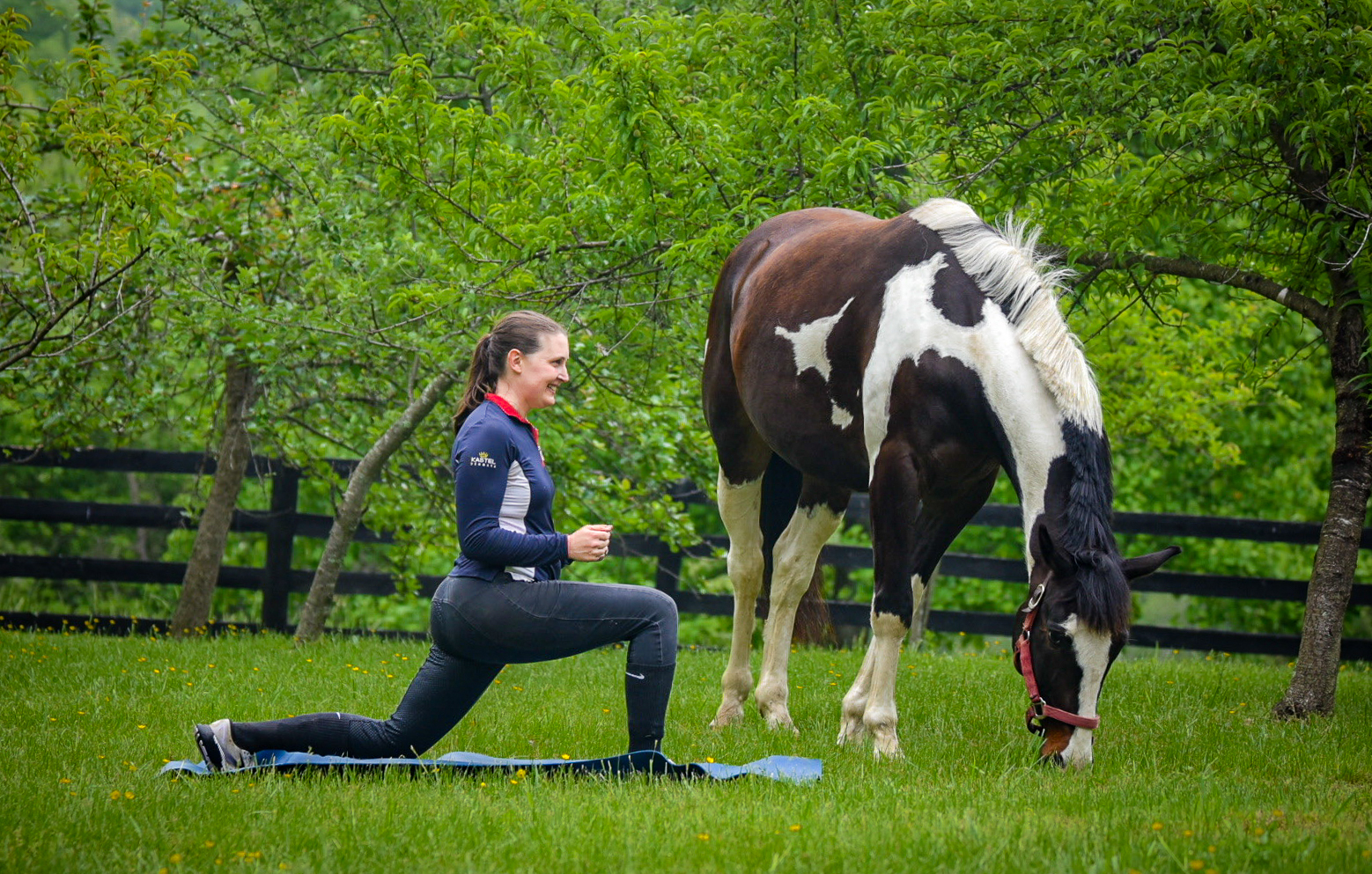
Lunge
This is a great exercise for building strength in the lower body. However, if you are currently dealing with knee pain I do not recommend doing this exercise without the supervision of an experienced exercise specialist.
- Start with a split stance with one foot about 3' in front of the other. Your feet should be shoulder-width apart so your hips can shine straight forward.
- Shoulders stay back and down, and bend you elbows at your side.
- At the same time, bend your front and back leg. You want the forward leg to be parallel to the ground, and your back knee to hover just above the ground.
- Repeat this exercise on one side for as long as you can until you can't do anymore or for 2 minutes, whichever comes first (make sure to set a timer so you can keep track).
- Switch to the other side. You might not last as long on this side because you are already fatigued; just make sure to not always start on the same foot. Switch back and forth each day you exercise.
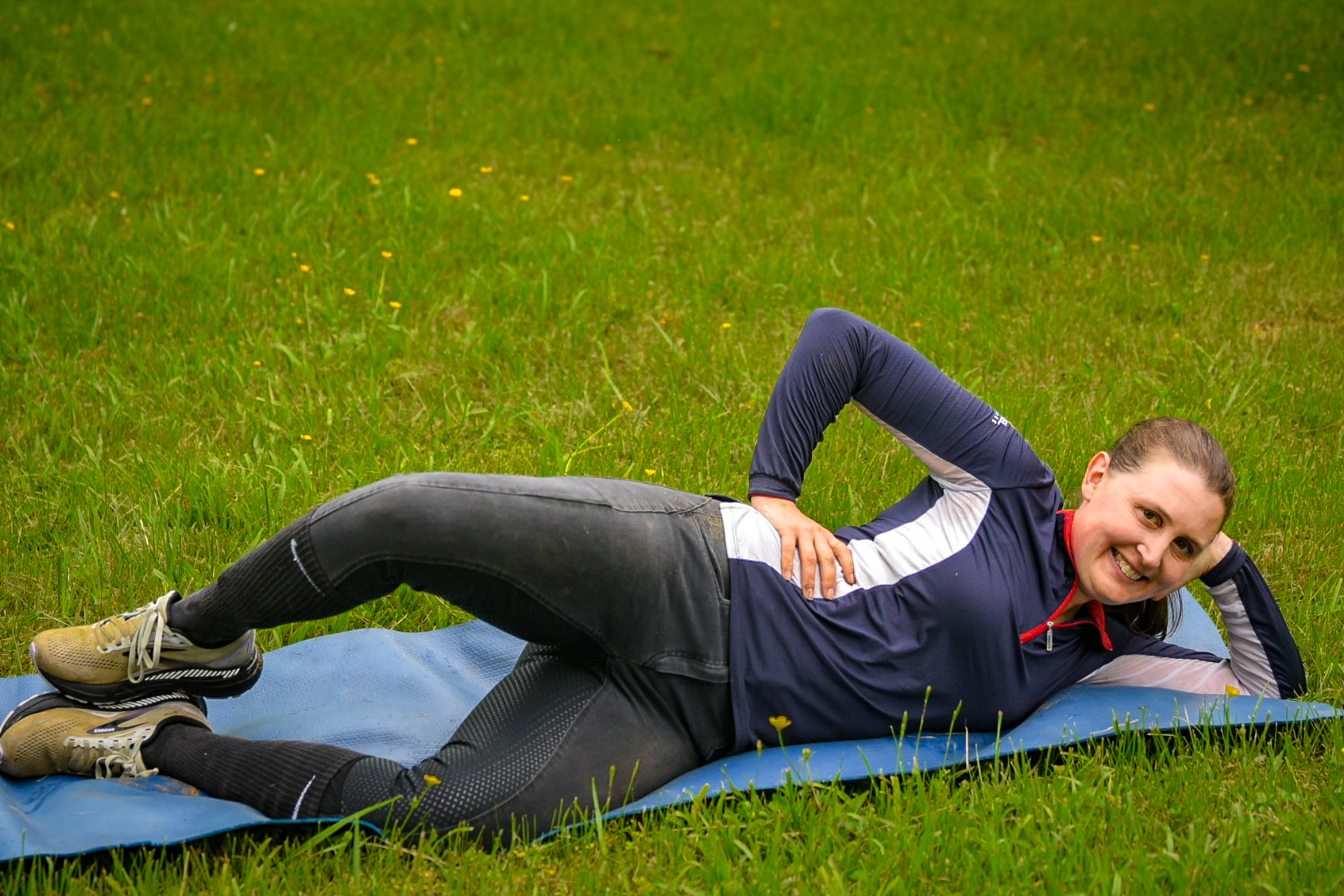
Clamshell
If you're currently dealing with low back pain, this is one of my favorite exercises for you. This is also very helpful for stabilizing your core and to activate your glute medius. I sometimes call this the "pain in the butt" exercise, with good reason. When you are doing this exercise correctly there should not be any rotating in your torso; you are keeping your center stable.
- Start by laying on your side. You want to have a bend in your knees so that your hips and your heels are aligned.
- You can prop your head up on your hand or rest your head on your arm, whatever feels the most comfortable in your neck.
- Place your hand on your waist just above your hip bone.
- Bring your belly button to your spine, and a lift your top knee up toward the ceiling.
- Only lift to the point you can stay perpendicular to the ground; you don’t want to start leaning back—that's too high—your hips should stay stacked one on top of the other.
- Inhale the knee up and exhale it down.
- If you feel like you're wiggling too much in the core, place your top hand in front of your belly button.
- Repeat this one side for 2 minutes. Then rollover to the other side, and do the same thing.
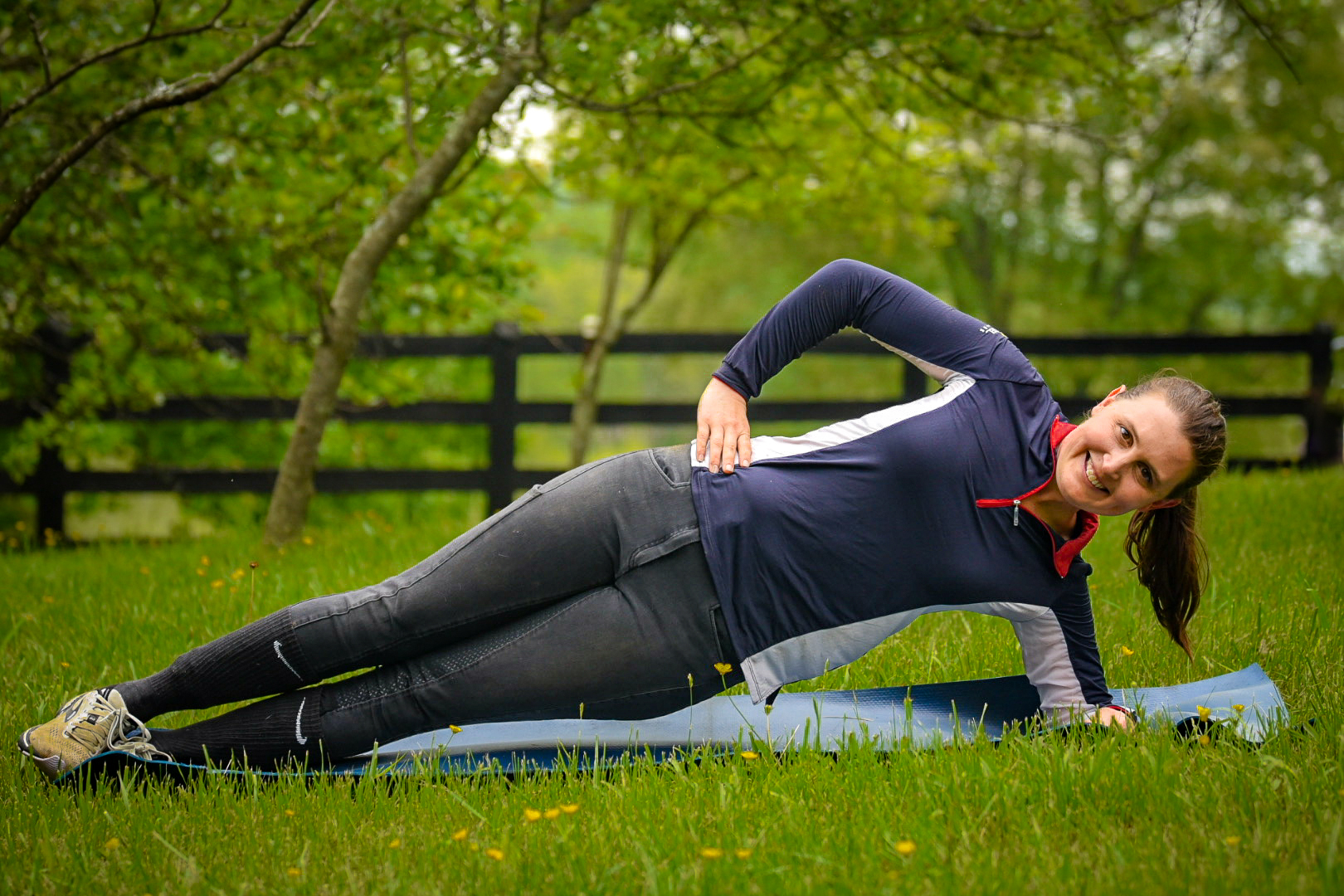
Side Plank
This is a great exercise for stabilizing through your core. However, if you are working with a shoulder injury of have shoulder pain, this is something you should do under the supervision of an exercise professional. They may modify and find a different exercise for you.
- Roll over onto your side.
- Place your elbow on the ground directly below your shoulder, then place your forearm on the ground perpendicular to your body.
- Straighten your legs out so you are in alignment; heels, hips, head, and stack your top foot on top of your bottom foot.
- You can modify this exercise by keeping the bottom leg out behind you like a kick stand.
- Engage through your sides, and drive your top hip straight up toward the ceiling so that the bottom hip is floating
- Hold this position for 30 seconds working up to 90 seconds. If you can do this for 90 seconds, holding it for longer is not worth the strain on the shoulder so you can come out of it.
- Switch, and do the same thing on the other side.
Laura Crump Anderson is the owner and founder of Hidden Heights Fitness. She has her degree in Kinesiology with a concentration in exercise science, is an American College of Sports Medicine-certified personal trainer, a 200-hour yoga teacher, and holds a mat pilates certification as well. Laura works with many international event and dressage riders to improve their application of aids and longevity for riding. However, one of Laura's favorite jobs is helping riders achieve lifelong goals whether that is sitting the trot, not losing their breath on cross-country, or crossing the finish flags at a five-star. Laura lives in the heart of Area II in Virginia with her husband and two dogs, and still has goals of competing with her 5-year-old homebred. You can sign up for your own personal training with Laura via zoom www.hiddenheightsfitness.com.


